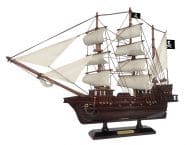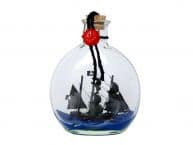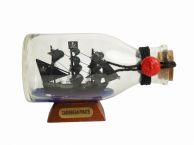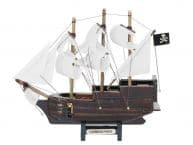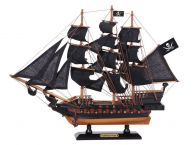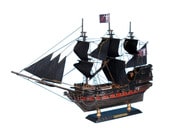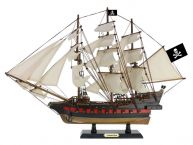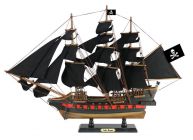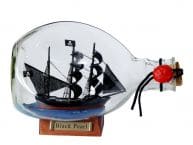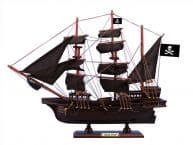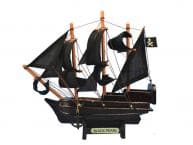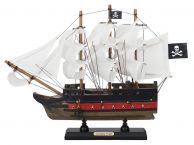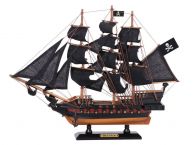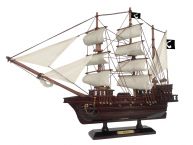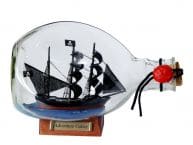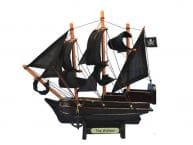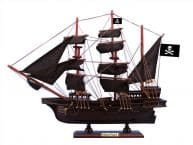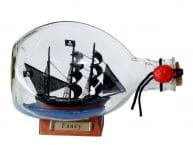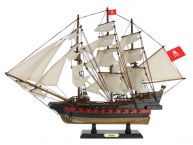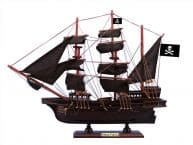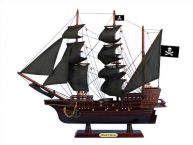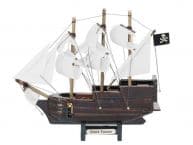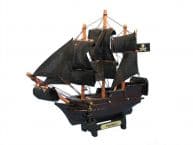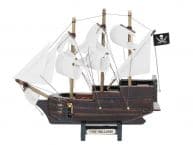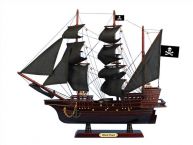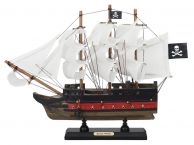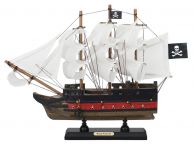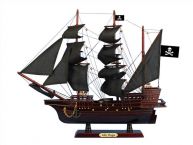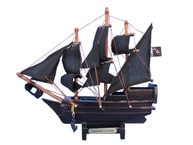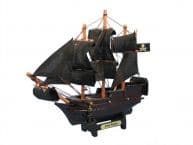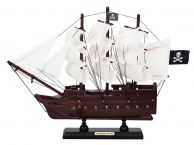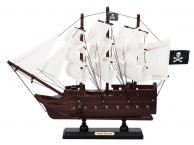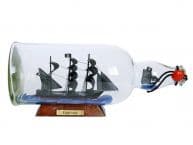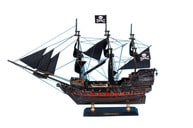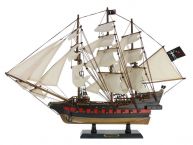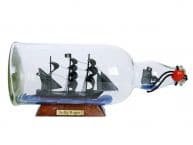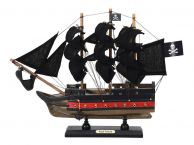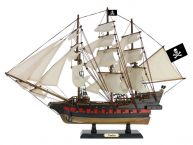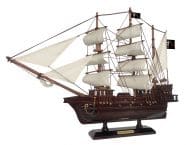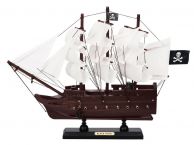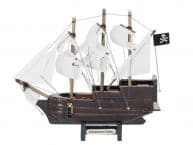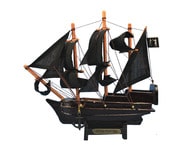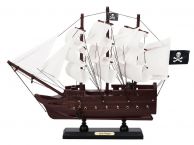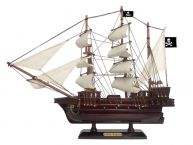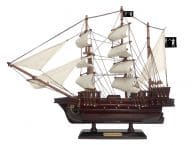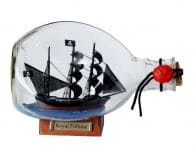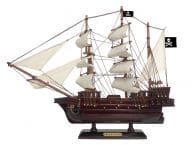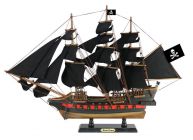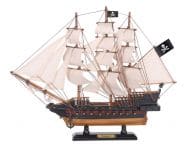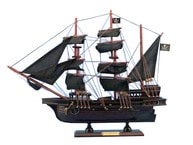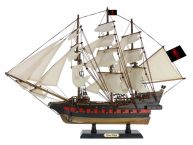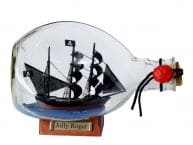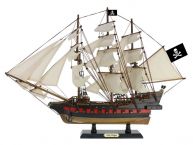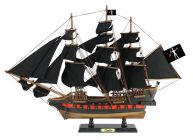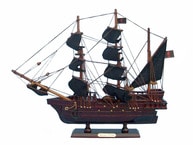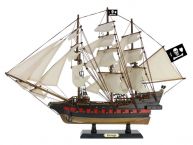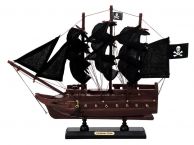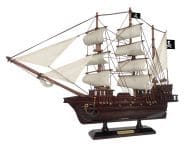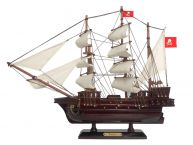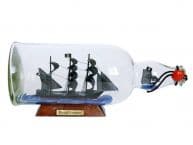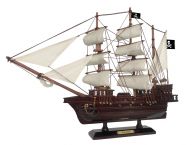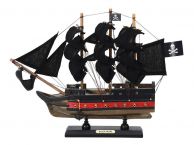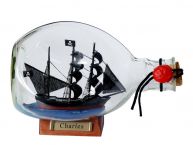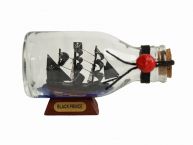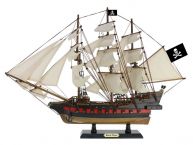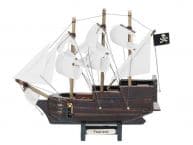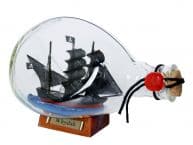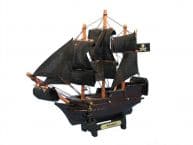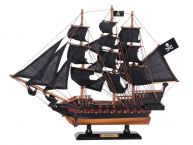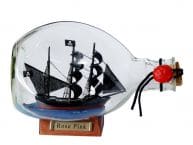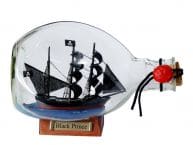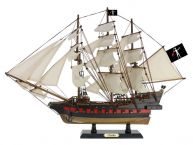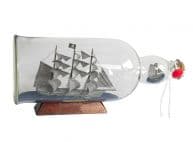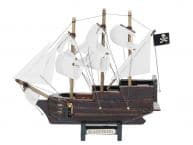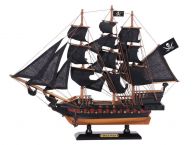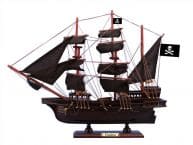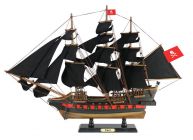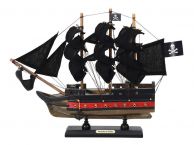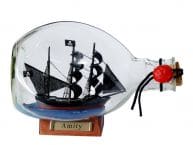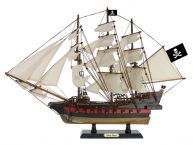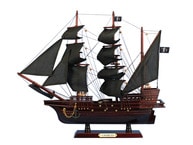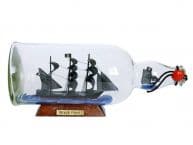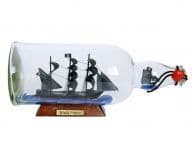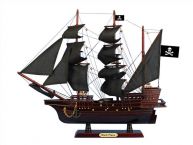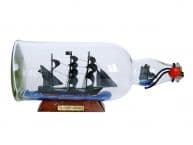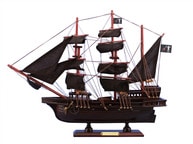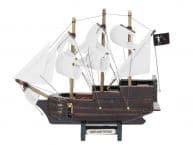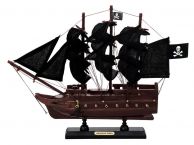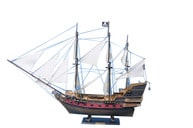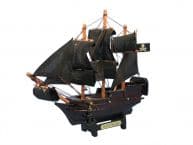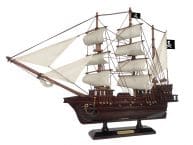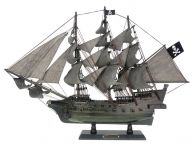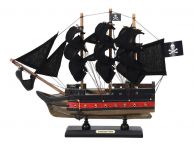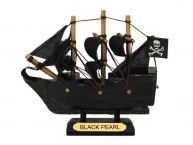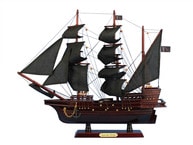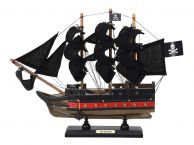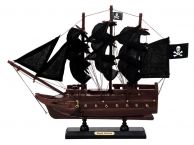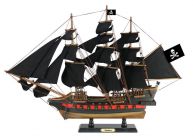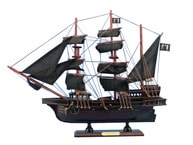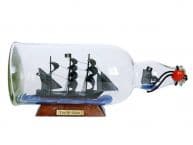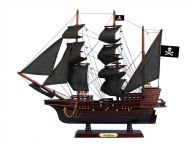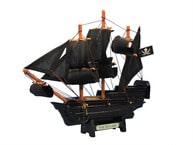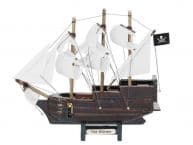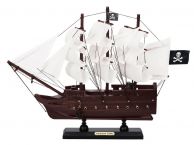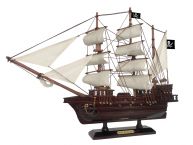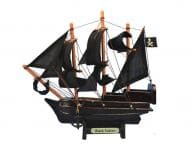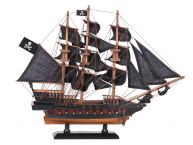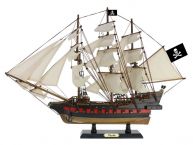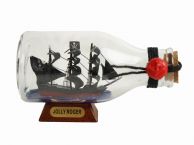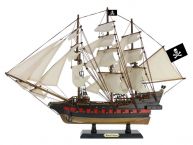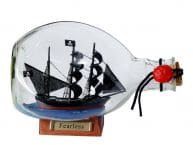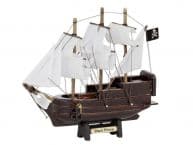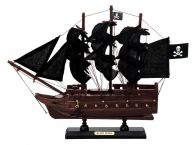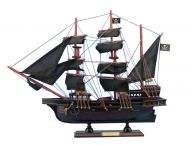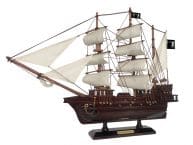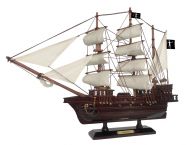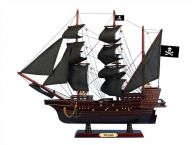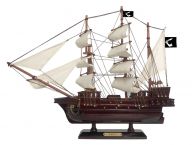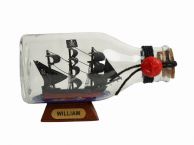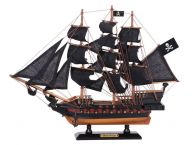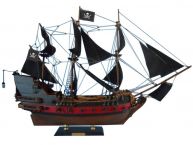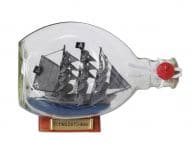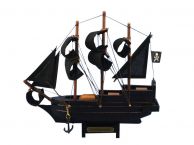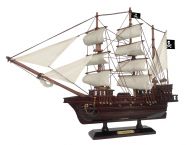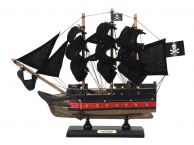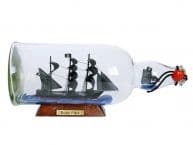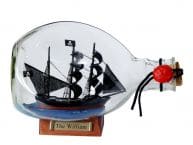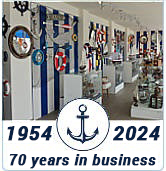Handcrafted Model Ships customers also shopped

|
|

|
Wooden Caribbean Pirate Black Sails Limited Model Pirate Ship 26"
Pirate Ships of the Caribbean:
Throughout the Golden Age of Piracy three classes of ships were of particular use throughout the Caribbean. Rising to prominence in 16th century Mediterranean piracy, the brigantine displayed a square-rigged foremast and fore and aft sails on the main mast, allowing for superior maneuverability and speed. Weighing up to 150 tons, and capable of carrying 100 crew and 12 cannons, these ships had twice the cargo space of sloops and became a favorite of pirates in the Caribbean two hundred years later.
The galleon was also used favorably, though was a much harder target for pirates to acquire. Developed in the 15th and 16th centuries in Spain and Portugal, these massive ships typically boasted two or three decks, as many as four masts, and carried up to 200 crew and 70 cannons. The downside to such might and firepower was sacrificing speed and agility, as galleons generally made eight knots maximum and were ineffective at sailing into the wind. While pirates utilized these large ships for intimidation, schooners and brigantines were generally preferred.
A later development in shipbuilding, the schooner was of Dutch and North American design, coming to fruition in the 1700s. Crafted with narrow hulls and fore and aft sails for maneuverability and speed, as well as operation in shallow waters, the schooner was perfect for quick pirate raids, though it lacked in size of crew, storage space, and cannon compliments.
Privateers and Buccaneers:
Arising from international wars, territorial disputes, and trade conquest, it became a necessity for European powers in the 16th century to expand their early navies. Privateering rose to prominence during this time as a seamless and cost-effective method of enhancing a country’s seafaring presence, and later lead to a mass influx of piracy, particularly in the Caribbean. During times of war these powerful European nations would authorize private citizens and ships with letters of marquee, allowing them to legally attack foreign ships at sea. In this way these nations would have a functional navy without the need for trained naval officers or for government spending. As these privateers were funded by private investors the captured ships and bounty would be divided between the sailors, investors, and the government granting the letters of marquee. While this was exceedingly effective for these seafaring powers during war, it also lead to a rise in piracy as many of the privateers would not relinquish their lives at sea at war’s end. Edward Teach, better known as the fearsome pirate Blackbeard, was one such privateer turned pirate.
Specific to the Caribbean were pirates termed buccaneers, a name derived from the Caribbean Arawak Indians. Generally these were French, Dutch, and English citizens who had lived sparingly off of the land, only later turning to piracy as a means to better lives in the developing Caribbean, often operating with the partial support of the non-Spanish colonies, their activities generally considered “legal” until the 1700s.
Traditionally buccaneers had a number of peculiarities, most prominent of which is that their crews operated as a democracy; the captain was elected by a crew that could vote to replace him. The captain had to be a leader and a fighter—in combat he was expected to be fighting with his men, not directing operations from a distance. In combat buccaneers were considered ferocious fighters and were reputed to be experts with flintlock weapons, many of them fantastic marksmen.
Spoils were evenly divided into shares between buccaneers, and often the crews would sail without wages—"on account" – with all loot being divided after the course of many months at sea. Due to the democratic nature of their ships, the freedom of choice, and the possibility of vast profits, there was an especially strong esprit de corps among pirates, often leading them to emerge victorious in battles where they were otherwise outmanned or outgunned. Particularly intriguing is that there was also a social insurance system implemented, guaranteeing money or gold for wounded buccaneers at a worked-out scale.
The Fall of the Golden Age of Piracy:
Between the 1650s and 1680s piracy experienced its first major expansion throughout the Caribbean. In response to Spanish attacks against the early settlers, who had been living off the land, many of these people became buccaneers as a means of revenge and to potentially better their lives. Also during this time England and France enjoyed a brief truce as both countries fought to expel the Spanish, leading both to grant many of these buccaneers letters of marque; in effect legalizing their piracy throughout the region. With a constant stream of ships and merchandise, and protection from both Britain and France, piracy was on the rise in the Caribbean.
Toward the end of the century, as France and Britain were once again enemies, profits in the Caribbean began to wane and the majority of pirates migrated elsewhere. Particularly along the east coast of the Americas and the Indian Ocean, shipping and trade were on the rise, granting pirates a number of new targets. As both Britain and France fought for supremacy in the trade routes of East India, pirates venture into these new waters to capitalize on the seemingly endless supply of unprotected shipping vessels.
Following the War of Spanish Succession, in the early 18th century, the Caribbean experienced its second expansion of piracy. With the signing of the Treaty of Utrecht multiple European nations agreed on peaceful terms, leaving countless thousands of sailors and soldiers without work. As shipping and slave trade was booming during this time, in what is called the triangular trade, the Caribbean saw a massive economic rise, which in turn lead to further piracy. While this initial influx of sailors was a boon for piracy, soon their numbers and conduct began to attract the attention of European naval powers. With an even greater stake in Caribbean trade than the previous century, large navies began to protect merchant ships and eventually transitioned to hunting the pirates themselves. As profits shrunk and the pirate lifestyle became increasingly deadly, the Golden Age of Piracy saw its end, though the legends from its time would live on throughout history.





 Handcrafted Cast Iron
Handcrafted Cast Iron









